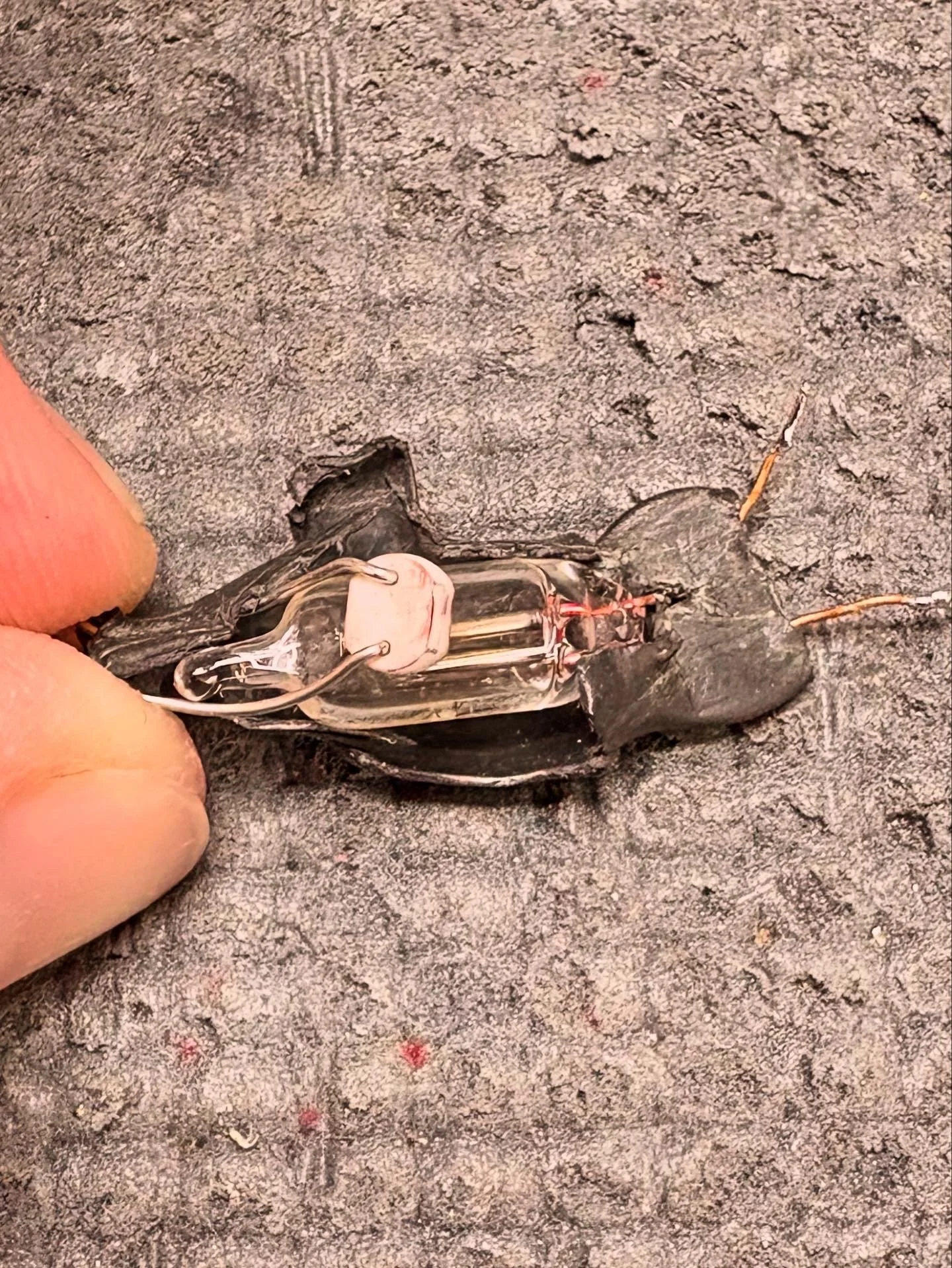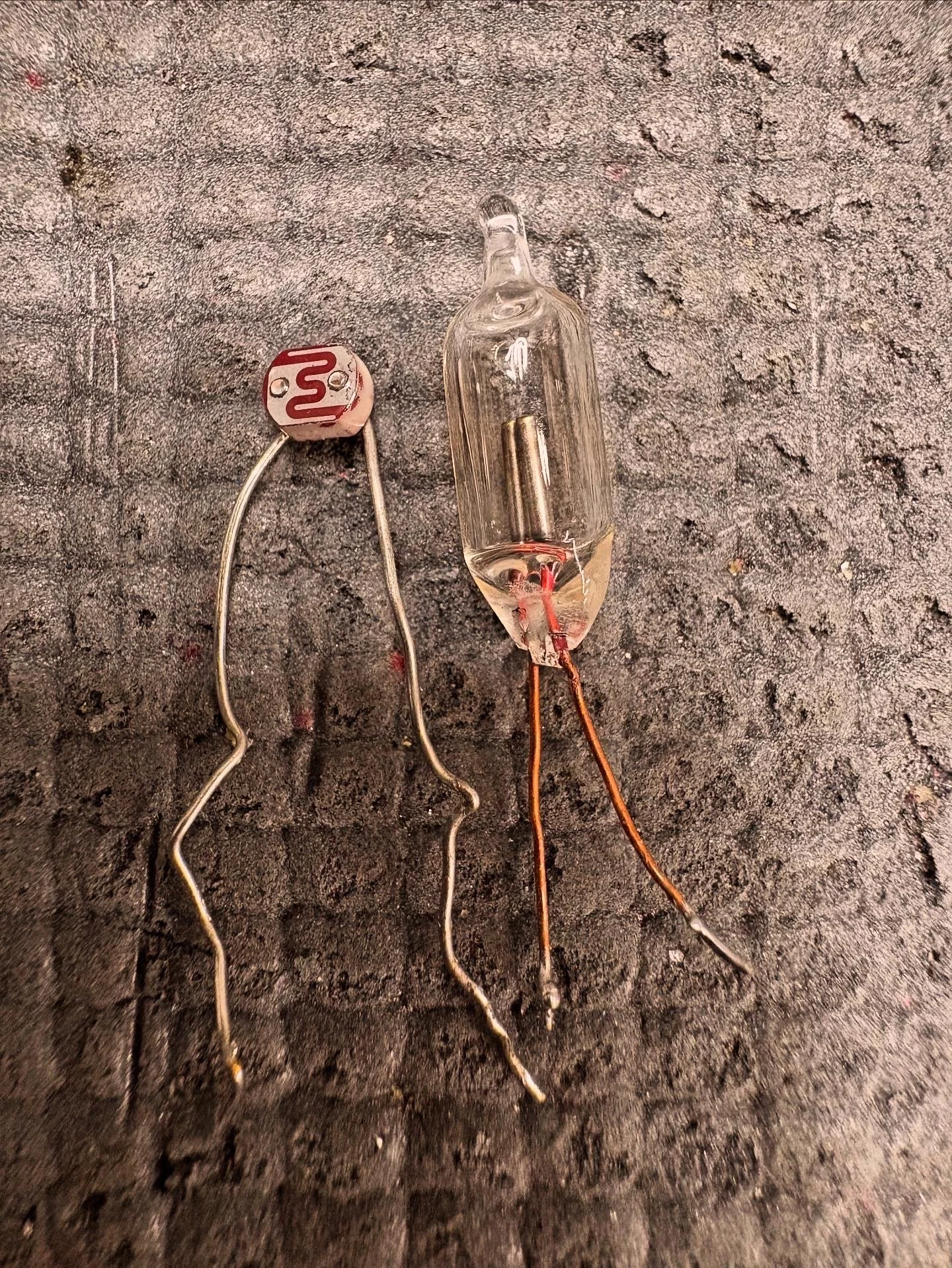How Does A Tremolo “Roach” Work?
No AI used in the creation of any blog post.
So, last week I posted a series of photos on Instagram where I dissected an old tremolo “roach” from a 1979 Fender Deluxe Reverb, and for some reason people found it really interesting. So, let’s just talk about what that thing does, and why it’s cool.
First, not all tremolo circuits use a “roach,” and from here on out, were going to call it an optocoupler because that’s less gross. It’s also more descriptive in a technical rather than visual way. So, we can get into bias shifting tremolo in a separate post.
But maybe we should go back even a bit further, and just settle the whole vibrato/tremolo issue. Because you might be looking at an amp like a Deluxe Reverb or a Twin Reverb, and it says “Vibrato.” For reasons that have never been adequately explained to me, Leo Fender just couldn’t keep Tremolo and Vibrato straight.
Tremolo is a shift in the signal’s amplitude— it’s volume. Vibrato is a shift in the signals pitch. And I’ve heard the explanation that Leo Fender called the effect Vibrato because for a few years Fender made brown amps that had a pitch-shifting, harmonic tremolo. This was only for a couple of years in the early ‘60s, but this is often used as an explanation for why Leo called tremolo, vibrato. But… it doesn’t explain why he called the whammy bar found on Stratocasters a “Tremolo Arm.” In that case, you are changing the pitch, so the effect would be vibrato. It’s just a whole thing, and we haven’t even talked about optocouplers yet.
The optocoupler is actually two components shrinkwrapped together. The shrinkwrap combined with the legs of two components sticking out gives the little guy the appearance of a cockroach, but we’re not going to call them that.
One of the components is a light-dependent resistor, commonly referred to as an LDR. This is a variable-type resistor— in that it can change its resistance—, and it works using light. As light shines on the resistor itself, the amount of resistance changes. The other component in the optocoupler is— you guessed it— a light. A small, neon bulb to be more exact.
The bulb is connected to the tremolo circuit’s oscillator and it pulses at a rate dependent on where the “Speed” control is set. As the bulb flashes, the LDR’s resistance fluctuates and creates the pulsing sound of tremolo— not vibrato.
Not yet dissected optocoupler
All wrapped up together
46 years they’ve been together!


